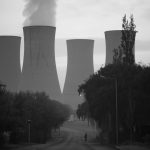Deadly smog haunts the north of India
Residents of Delhi and the surrounding area are struggling in severely bad air quality conditions, taking to social media to condemn the government’s poor handling of pollution year after year.
Author:
13 November 2019

India is dealing with its worst air pollution crisis in years. The air quality in the country’s north has degraded to dangerous levels in recent weeks, prompting authorities to declare a public health emergency in the national capital of Delhi. The region was engulfed in a thick smog that saw air quality index values reaching almost 1 000, a figure exceeding three times the threshold for “hazardous” conditions.
Visibility was near zero in Delhi, which has been named as the world’s most polluted city, and residents were complaining about a range of health issues. State authorities responded by closing schools, banning construction, staggering working hours for government officials, imposing a car-rationing system to banish half the city’s cars from the streets and deploying officers to stop garbage-burning across the city. Most of Delhi’s 20 million residents tried to remain indoors, with employees at some private firms given the option to work from home.
The air quality in several parts of Delhi peaked at well above 1 000 over the weekend. Scores between 401 and 500 are considered “dangerous”, while anything over 500 is “hazardous”. The safe limit specified by the World Health Organisation is below 25, with anything above deemed harmful to health. Owing to low visibility, flights in and out of Delhi were diverted.
There was a massive public outcry over the crisis, with citizens taking to social media over the government’s failure to tackle air pollution, which has now become a perennial problem. Residents took jibes at the authorities, saying the choking smog had turned their city into a “gas chamber”.
Related article:
Social media hashtags like #DelhiBachao (Save Delhi) and #DelhiAirEmergency were trending as residents expressed their desire to leave the city until the air quality improves.
“Delhi has turned into a gas chamber due to smoke from crop-burning in neighbouring states,” tweeted Delhi Chief Minister Arvind Kejriwal. “It’s very important that we protect ourselves from this toxic air. Through private and government schools, we have started distributing 50 lakh masks today. I urge all Delhiites to use them whenever needed.”
India’s Supreme Court lashed out at the state government for “passing the buck” on air pollution and failing to take action to tackle the city’s toxic smog. “This can’t go on. People aren’t safe even inside their houses and rooms,” the court said, having considered a report by the Environment Pollution (Prevention and Control) Authority that is spearheading efforts to deal with Delhi’s pollution.
The term “smog” is used to indicate environmental episodes during which harmful pollutant –
containing a mixture of particulate matter (PM), smoke and gases – produces haze and reduces visibility. Smog can result from factors such as increased emissions resulting naturally from forest fires or anthropogenic (human) activities such as the burning of fossil fuels, vehicle exhaust emissions and industrial activities. Meteorological conditions worsen smog, which can result in acute health risks.
A hazy affair
Delhi’s smog is the outcome of an existing ambient, urban air pollution problem with a host of factors – including vehicle and industrial pollution, farmers burning agricultural residue (known as stubble), dust from roads and construction sites, and coal power plants – coming together to significantly worsen the smog. The air quality in the city deteriorated particularly after 28 October, a day after the Hindu festival of Diwali during which revellers set off fireworks and firecrackers as part of religious celebrations.
Every year, during the post‐monsoon autumn season in October and November, wheat and rice farmers in India’s northern states of Punjab, Haryana and western Uttar Pradesh undertake the traditional practice of burning the leftover crop residue in their fields in preparation for ploughing and replanting. Farmers are reluctant to plough the stubble back into the land or hire expensive machines to uproot and roll the stubble because of the cost involved.
Crop residue burning is a recurring issue. The emissions spread in all directions, depending on weather conditions. Satellite imagery often shows large areas of farmland on fire in northern India, starting in mid-October and creating vast smog plumes that extend over thousands of kilometres and can be seen from space.
Related article:
Crop residue burning began in 1986, when mechanised harvesting was introduced for wheat (in April and May) and rice (in October and November). It has recently gained traction because of its substantial impact on seasonal air quality, particularly over the Indo‐Gangetic Basin.
In recent years, crop residue burning has severely affected the air quality over the basin in general and Delhi in particular. It also causes a spike in black carbon aerosol or soot – formed through the incomplete burning of biomass – which has serious implications because of its ability to absorb incoming solar radiation and impact on the climate, human health, rainfall and soil productivity. The increase in black carbon from crop residue burning has made the Indo‐Gangetic Basin region a global hotspot for atmospheric pollutants and a place for recurring winter haze and toxic fog.
India has been trying to tackle its worsening atmospheric emissions, which have been compounded by population growth and rapid development, through legislation and planning at national, state and city level. Studies have found that the main sources for PM pollution in Delhi each year are usually transport (13% to 40%), domestic (8% to 30%), diesel generators (4% to 10%), brick kilns (11% to 15%), industry (11% to 30%), construction (5% to 20%), waste-burning (7% to 12%), road dust (6% to 40%) and power plants (14% to 16%).
The central government has introduced measures to address pollution sources. The Pradhan Mantri Ujjwala Yojana programme provides clean fuel in the form of liquid petroleum gas to women living below the poverty line and it has accelerated implementing more stringent vehicle emissions standards and the National Clean Air Programme. But critics have said the government’s efforts are falling short of addressing the magnitude of the problem air pollution poses for the country.
According to Kirk Smith, a professor of global environmental health at the University of California, Berkeley in the United States, India’s implementation of antipollution laws is poor. “Rural politicians and urban politicos in India have vastly different constituencies, making it difficult for urbanites to convince farmers to use less polluting practices or for rural people to ask city dwellers to drive less,” Smith told the Vox news site, adding: “Outdoor air pollution is pretty much a governance problem.”
In addition to the political aspect of the air pollution problem in India, there are also class dynamics at play in that the country’s poor endure the brunt of hazardous air quality. While the affluent residents of India can afford to buy protective masks, costly air purifiers and houses in greener parts of the city, it is virtually impossible for the poor to afford the same. The worst hit are daily-wage workers such rickshaw pullers and construction workers.
Health implications
In the days following the hazardous smog that permeated Delhi, hospitals in the city recorded a 15% to 20% increase in the number of patients complaining of asthma-like symptoms. Even healthy residents who had spent too long outdoors complained of watering eyes, sore throats, coughing, difficulty in breathing and headaches. People wearing protective face masks was a common sight, with those selling appliances for home air purification doing a brisk trade.
Experts say breathing the air in Delhi is equal to smoking 50 cigarettes a day, and serious health conditions like chronic obstructive pulmonary disease and lung cancer are being recorded owing to long-term exposure to pollution. A 2019 study, State of Global Air 2019, says exposure to outdoor and indoor air pollution contributed to 1.2 million deaths in India in 2017.
Related article:
Air pollution is a significant environmental and health hazard. Air pollution levels in most Indian cities are far beyond the World Health Organisation’s guidelines of 10 micrograms per m³ (µg/m³). Many studies have repeatedly revealed the adverse health effects associated with short and long-term exposure to PM on respiratory and cardiovascular disease – acute myocardial infarction, heart failure, cardiac arrhythmia, atherosclerosis and cardiac arrest – that account for the majority of deaths in South Asia. It was not gaseous pollutants such as oxides of nitrate, sulphur, carbon mono-oxide or ozone but PM of fine or coarse size – PM2.5 and PM10 – that was directly associated with mortality.
Bizarre statements
Minister of Health and Family Welfare Harsh Vardhan suggested that Delhi residents eat carrots to deal with the smog. On 3 November, Minister of Environment, Forest and Climate Change Prakash Javadekar advised residents in a tweet to start the day by listening to “scintillating” music.
A Bharatiya Janata Party (BJP) lawmaker from the Uttar Pradesh state, Sunil Bharala, suggested that people should perform yajnas, a Hindu burning-ritual to please the gods, as this was the only way to deal with the toxic smog. He asserted that stubble-burning is a natural activity that has been performed since time immemorial and that the resulting smoke cannot be prevented.
Another BJP leader, Vineet Agarwal Sharda, alleged that Pakistan and China were to blame for the high levels of pollution in the region of the national capital and adjacent areas, claiming that either of the two neighbouring countries could have released poisonous gases into India. “There is a possibility that this poisonous gas could have been released by any neighbouring country which is afraid of us. I feel that Pakistan or China are afraid of us,” he told news agency ANI.



